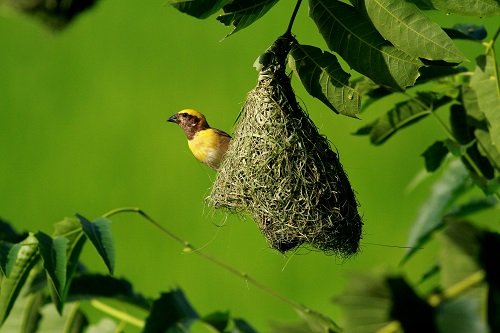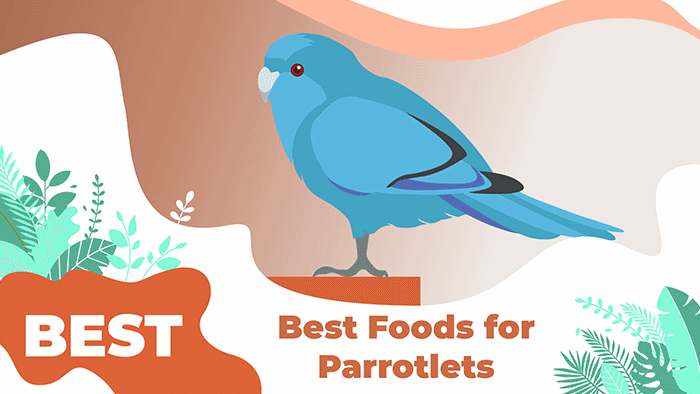Canary Birds: Personality, Care And Nutrition
This page contains affiliate links. We may earn money or products from the companies mentioned in this post through our independently chosen links, which earn us a commission. Learn More
The canary (or Serinus canaria) is a favourite amongst bird-keepers the world over. Its popularity may have started around the 1800s when these little birds were used down coal-mines as early warnings for noxious gases, and later the cartoon character Tweety Bird lead to another spike in their popularity. Nowadays, parrots have taken over as the more popular bird pet, but canaries remain an excellent choice.
Canaries originated, as their name might suggest, from the Canary Islands, as well as the Azores and Madeira. Members of the finch family, they enthralled Europeans with their beautiful song and quickly became domesticated. The domestic canaries we know today bear little resemblance to the original wild canary.
Types Of Canary Bird
Canary birds are known both for their bright colors and their amazing song. These undemanding little birds can make a great pet, and fill your life with sweet song, but finding what you want means understanding the different types and breeding of these songbirds.
Canary breeders tend to focus on three main characteristics: song, color and type.
Song canaries are bred to perform specific songs, and even perform at special canary song competitions. The sweetest song comes from the male canary, usually after they are mature at around 6 months of age. The hen birds can chirp but rarely sing. It is worth noting that canaries don’t sing at all during their molting period in the summer – they sing to attract mates in the fall, winter and spring. Popular types of song canary include the Waterslager, the American Singer and the Spanish Timbrado. Canaries are reliant on day-length to determine when best to breed – and therefore when most to sing. Our modern day practices of keeping these beauties as a cage bird can cause some problems here due to exposure to artificial lighting. Learn more about song canaries here.
Those bred for color are obviously bred for their plumage, with the red factor and the yellow canary the most popular. Learn more about the red-factor canary here.
Type canaries undergo selective breeding for specific physical traits, such as frills. Types of canary include the Gloster, the Fife, the Norwich and the Crested.
Personality
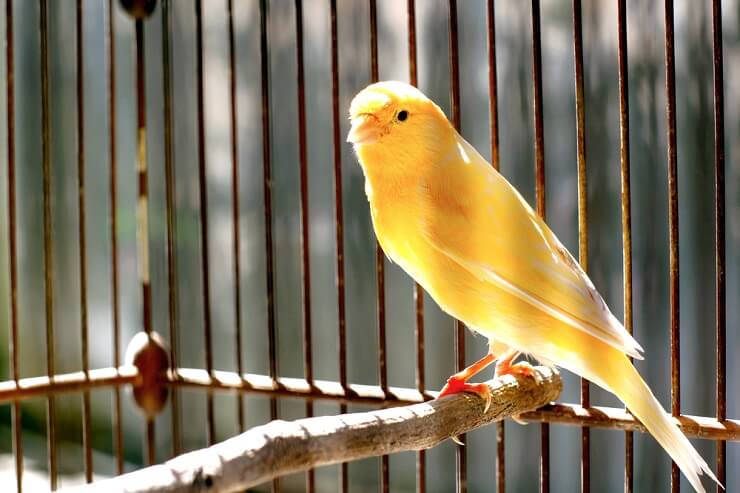
These little birds are known for their wonderful plumage and wondrous song. They are small birds, measuring only around 3-4 inches in length. The canaries enjoy human company, but need more gentle handling than the larger birds such as parrots. They can become accustomed to some handling, but are really happiest with a more hands-off approach.
Canary birds are quite happy to be solitary, they can easily be housed alone but can also thrive in an aviary with other small birds such as those from the finch family. Male canaries must never be housed together as they will fight vicious territorial disputes, especially around the breeding season.
Care
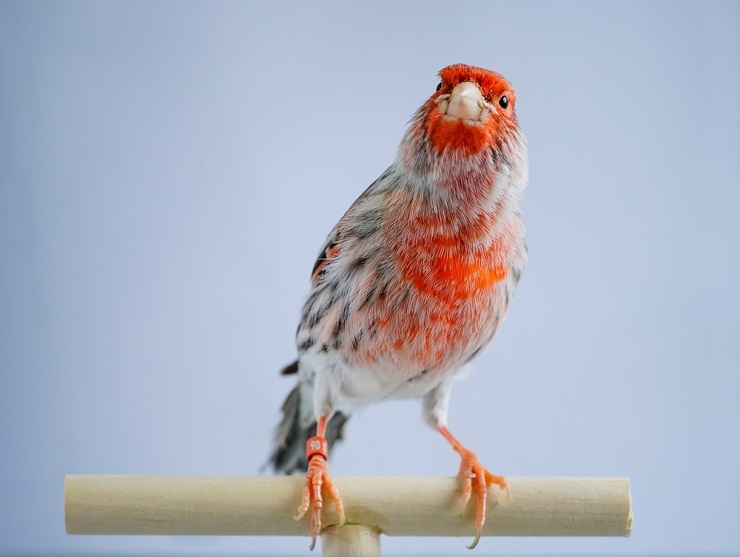
The domestic canary is a small bird, but still needs adequate housing. A cage for a single canary should be at least 20 inches by 24 inches, and preferably bigger so that they can fly around inside, between perches. Male canaries are territorial, and must never be housed together, although male-female pairs can do well together. Plenty of perches should be provided, with various textures and diameters. Perches provide exercise and keep the bird’s feet limber and healthy. Although quite hardy little birds, keep their cages away from drafts or direct sunlight. Cover the cage at night so that these songbirds can rest.
Canaries need exercise and to move around. Unlike parrots, they don’t need lots of chewable toys, but they do enjoy some enrichment such as bells or swings. Be careful with mirrors – some canaries become territorial and aggressive if they think another canary is in their cage. Canary birds also love space in the cage to move from perch to perch and they can enjoy a birdbath. An hour of flying time daily in a safe space is recommended.
Canaries kept as pet birds can have a lifespan of around fourteen years with good care and proper nutrition.
Nutrition
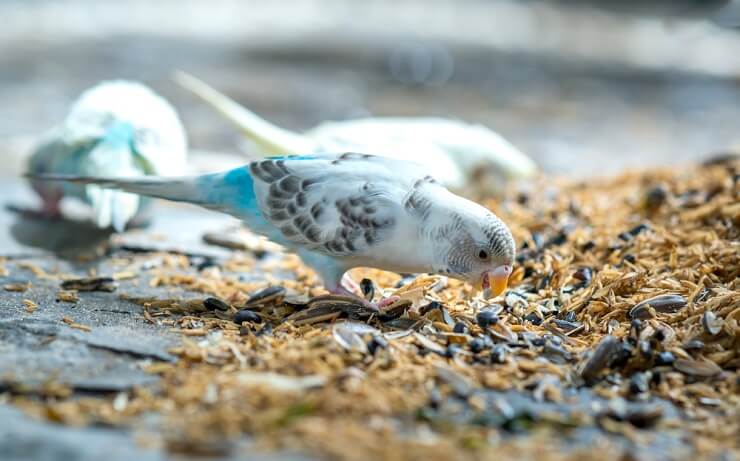
The wild canary would eat a diet mostly of seeds, with the occasional insect. Domestic canaries should be offered a seed mix that is specially formulated for canaries, usually coated in vitamins. Other seed mixes may be nutritionally lacking, so use aspecific canary diet, or pellets. You can offer pellets alongside the seed, in a separate dish. Read more about feeding seed or pellets here. When feeding seed, remember to remove the discarded hulls daily.
Fresh greens and some fruit can be a useful supplementation, but must be cut into small pieces in order to be able to be manipulated by the beaks of these small birds. Suitable examples are leafy greens, carrots, bell peppers, apples, banana, kiwi and mango. Fresh fruit and vegetables should be discarded later that same day if they are not eaten.
Fresh water should always be supplied.
Red-factor canaries require foods containing the pigment beta-carotene, which helps maintain their color. Breeding and egg-laying canaries will need higher protein levels.
Frequently Asked Questions
Are canary birds good pets?
These small birds can make excellent pets.. Like all birds, they require a high level of care, but these songbirds are suitable for beginner bird owners.
What is special about canary birds?
Canary birds are known both for their bright colors and also for their beautiful song.
Do canary birds talk?
Canaries are much more known for their song than their speech. The female birds mostly only chirp.
How much is a canary bird?
Canaries are available from many pet stores, specialized bird shops and from breeders. They are not hugely expensive depending on type, ranging from around $30-200.

